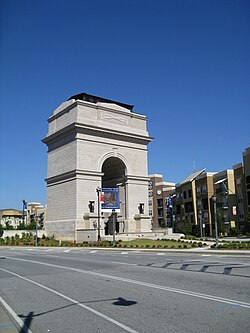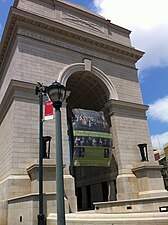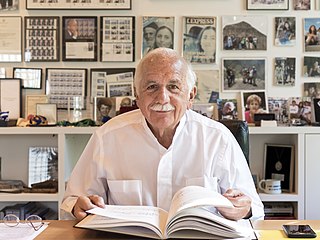
Moshe Safdie is an Israeli architect, urban planner, educator, theorist, and author. He is known for incorporating principles of socially responsible design throughout the course of his six-decade career. His projects include cultural, educational, and civic institutions; neighborhoods and public parks; housing; mixed-use urban centers; airports; and master plans for existing communities and entirely new cities in the Americas, the Middle East, and Asia. Safdie is most identified with designing Marina Bay Sands and Jewel Changi Airport, as well as his debut project Habitat 67, which was originally conceived as his thesis at McGill University. He holds legal citizenship in Israel, Canada, and the United States.
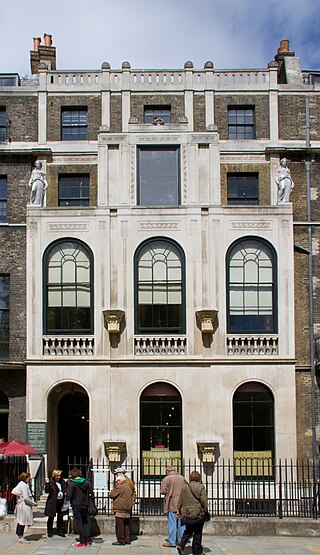
Sir John Soane's Museum is a house museum, located next to Lincoln's Inn Fields in Holborn, London, which was formerly the home of neo-classical architect John Soane. It holds many drawings and architectural models of Soane's projects and a large collection of paintings, sculptures, drawings, and antiquities that he acquired over many years. The museum was established during Soane's own lifetime by a private Act of Parliament in 1833, which took effect on his death in 1837. Soane engaged in this lengthy parliamentary campaign in order to disinherit his son, whom he disliked intensely. The act stipulated that on Soane's death, his house and collections would pass into the care of a board of trustees acting on behalf of the nation, and that they would be preserved as nearly as possible exactly in the state they were at his death. The museum's trustees remained completely independent, relying only on Soane's original endowment, until 1947. Since then, the museum has received an annual Grant-in-Aid from the British Government via the Department for Digital, Culture, Media and Sport.
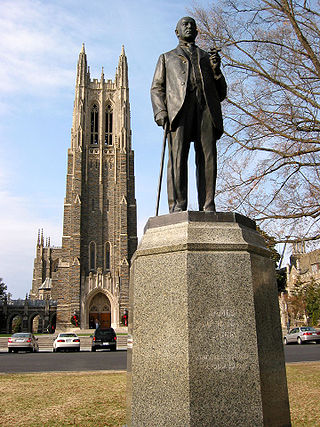
Charles Keck was an American sculptor from New York City, New York.

The Azadi Tower, formerly known as the Shahyad Tower, is a monument on Azadi Square in Tehran, Iran. It is one of the landmarks of Tehran, marking the west entrance to the city, and is part of the Azadi Cultural Complex, which also includes an underground museum.

The architecture of Atlanta is marked by a confluence of classical, modernist, post-modernist, and contemporary architectural styles. Due to the Battle of Atlanta and the subsequent fire in 1864, the city's architecture retains almost no traces of its Antebellum past. Instead, Atlanta's status as a largely post-modern American city is reflected in its architecture, as the city has often been the earliest, if not the first, to showcase new architectural concepts. However, Atlanta's embrace of modernism has translated into an ambivalence toward architectural preservation, resulting in the destruction of architectural masterpieces, including the Commercial-style Equitable Building, the Beaux-Arts style Terminal Station, and the Classical Carnegie Library. The city's cultural icon, the Neo-Moorish Fox Theatre, would have met the same fate had it not been for a grassroots effort to save it in the mid-1970s.

Atlantic Station is a neighborhood on the northwestern edge of Midtown Atlanta, Georgia, United States comprising a retail district, office space, condominiums, townhomes and apartment buildings. First planned in the mid-1990s and officially opened in 2005, the neighborhood's 138 acres are located on the former brownfield site of the Atlantic Steel mill.

Neoclassical architecture, sometimes referred to as Classical Revival architecture, is an architectural style produced by the Neoclassical movement that began in the mid-18th century in Italy and France. It became one of the most prominent architectural styles in the Western world. The prevailing styles of architecture in most of Europe for the previous two centuries, Renaissance architecture and Baroque architecture, already represented partial revivals of the Classical architecture of ancient Rome and ancient Greek architecture, but the Neoclassical movement aimed to strip away the excesses of Late Baroque and return to a purer and more authentic classical style, adapted to modern purposes.

The National Monuments Foundation is a non-profit organization that builds monuments, including the World Athletes Monument and the Millennium Gate.

William Lee Stoddart (1868–1940) was an architect who designed urban hotels in the Eastern United States. Although he was born in Tenafly, New Jersey, most of his commissions were in the South. He maintained offices in Atlanta and New York City.

The Architecture of Buffalo, New York, particularly the buildings constructed between the American Civil War and the Great Depression, is said to have created a new, distinctly American form of architecture and to have influenced design throughout the world.
Mack Scogin Merrill Elam Architects is an American architecture firm based in Atlanta, Georgia. The two principal architects are husband and wife Mack Scogin and Merrill Elam. The firm was first founded in 1984 as Parker and Scogin, and later, from 1984 to 2000, as Scogin Elam and Bray, and from 2000 as Mack Scogin Merrill Elam Architects. The architects are well known for their modernist buildings, often playing on polemical themes. The architects have received numerous architectural prizes and awards for their works.

Rodney Mims Cook was a Georgia public figure who served for over twenty years as an Atlanta city alderman and member of the Georgia House of Representatives.

The Museum of Design Atlanta (MODA) is a design museum located in Atlanta, Georgia, United States. It is billed as “the only museum in the Southeast devoted exclusively to the study and celebration of all things design."
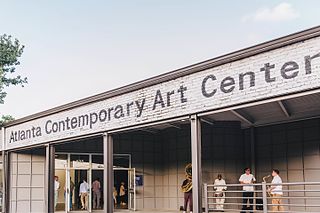
Atlanta Contemporary is a non-profit, non-collecting institution located in the West Midtown district of Atlanta. It is dedicated to the creation, presentation, and advancement of contemporary art by emerging and established artists.

The Atlantic Steel Company was a steel company in Atlanta, Georgia with a large steel mill on the site of today's Atlantic Station multi-use complex.
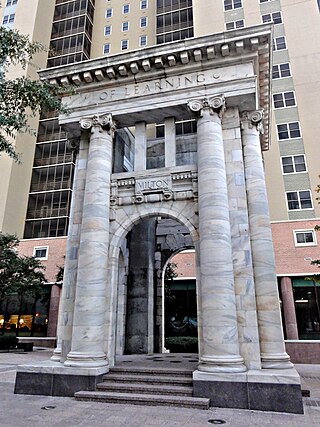
The Carnegie Education Pavilion, more often known as the Carnegie Monument, is a marble Beaux-Arts monument located in Atlanta, Georgia, United States. The pavilion was constructed in 1996 from the exterior facade of the Carnegie Library, named after Andrew Carnegie. The monument pays homage to the legacy of Carnegie by serving as a monument to higher education in Atlanta, with the seals of nine local area colleges and universities embedded in the floor of the monument. The monument was commissioned in 1996 by the Corporation for Olympic Development in Atlanta and designed by Henri Jova. The pavilion is located in Downtown's Hardy Ivy Park, at the curve in Peachtree Street where it diverges with West Peachtree Street. The monument's inscription reads: "The Advancement of Learning." It also features the inscriptions of the names of three famous Western poets "Dante", "Milton", and "Asop", in addition to the library's namesake, "Carnegie".
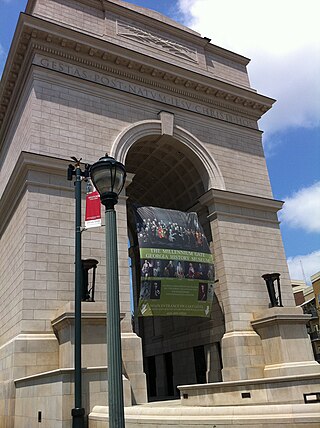
ADAM Architecture is a UK based, international architecture and urban design practice with offices in Winchester and London. It specialises in contemporary traditional and classical design, commonly known as New Classical Architecture.

The Hotel Aragon was a six-story, 125-room hotel at 169 Peachtree Street NE, at the southeast corner of Ellis Street in Atlanta, in what is today the Peachtree Center area of downtown. It was a major addition to the city's hotel capacity at its completion in 1892, cost $250,000, and was built and owned by George Washington Collier. It was the only major hotel in the city not adjacent to Union Station. A 1902 guidebook describes the Aragon as one of three first-class hotels in the city, together with the Kimball House and the Majestic Hotel.
Ivenue Love-Stanley,, , is an American architect. She co-founded Stanley, Love-Stanley P.C., an Atlanta-based architecture and design firm. She was the first African-American woman to graduate from Georgia Institute of Technology's College of Architecture, and in 1983 she became the first African-American woman licensed architect in the Southeast. Love-Stanley's projects include the Aquatic Center for the 1996 Centennial Olympic Games, the Lyke House Catholic Student Center at the Atlanta University Center, the Southwest YMCA and St. Paul's Episcopal Church, the Auburn Market in Sweet Auburn and the National Black Arts Festival headquarters.
The year 2016 in architecture involved some significant architectural events and new buildings.
